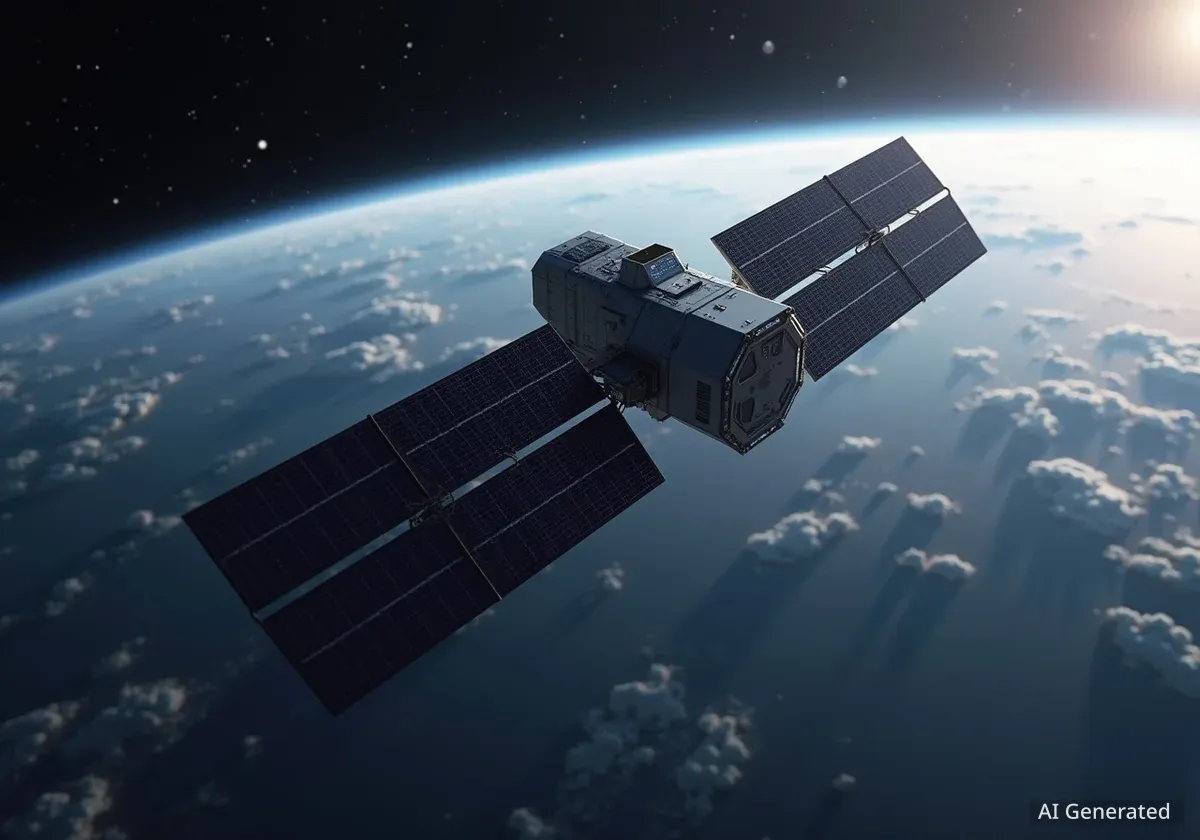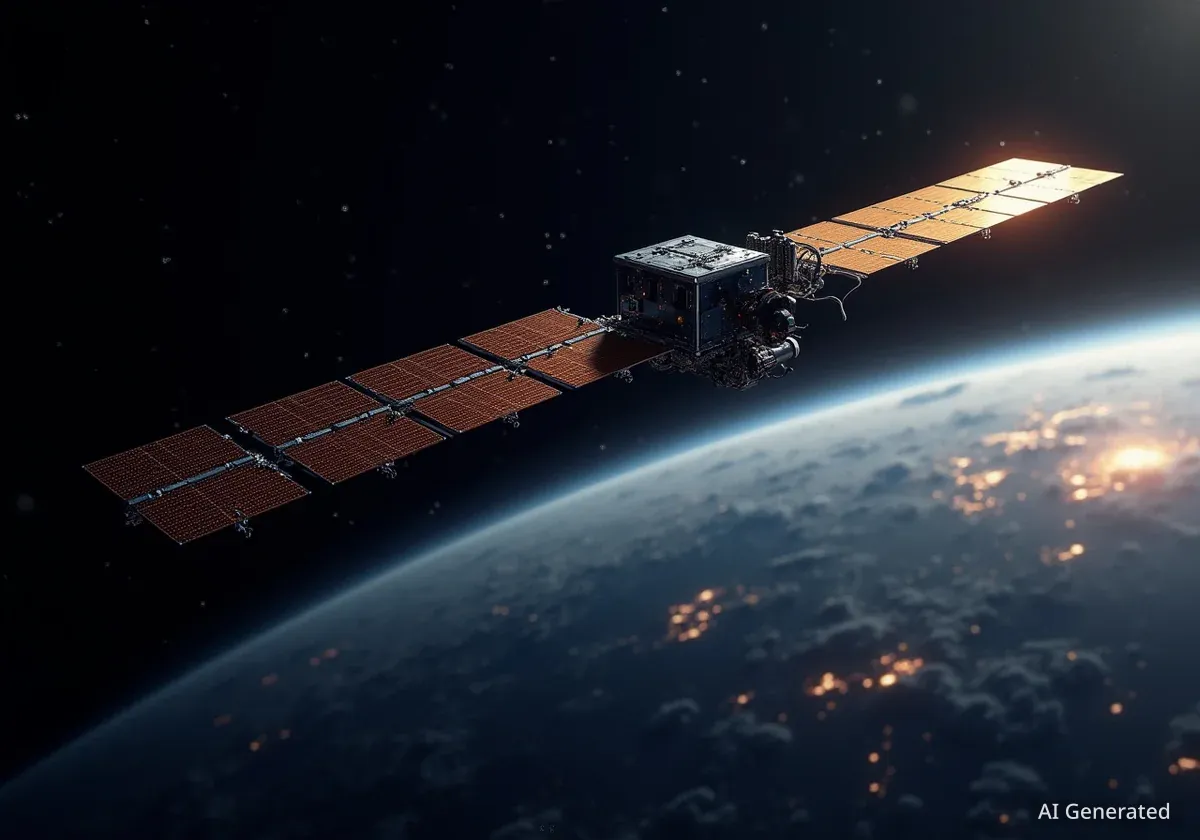The final frontier is no longer a domain reserved for scientific exploration and commercial satellites. Military strategists and defense industry leaders now unequivocally view space as a critical warfighting domain, essential for national security and modern conflict. The conversation has shifted from theoretical possibilities to the practical realities of orbital defense, offense, and deterrence.
Robert Lightfoot, president of Lockheed Martin Space, recently emphasized this strategic shift, highlighting the growing need for advanced defensive capabilities to protect national assets in orbit. This includes the development of sophisticated systems designed to counter emerging threats from adversarial nations, framing the future of defense as one that extends far beyond Earth's atmosphere.
Key Takeaways
- Top defense experts confirm that space is now treated as a primary domain for military operations, alongside land, sea, air, and cyberspace.
- Lockheed Martin Space is actively discussing the development of advanced defensive systems, including a conceptual missile shield dubbed the "Golden Dome."
- The United States military, through agencies like the National Reconnaissance Office (NRO), continues to launch sophisticated surveillance and intelligence satellites to maintain orbital superiority.
- The increasing weaponization of space raises complex questions about international treaties, conflict escalation, and the safety of commercial and civilian assets in orbit.
The New High Ground: Why Orbit Matters
For decades, military advantage has been defined by controlling the "high ground." In the 21st century, that high ground is low Earth orbit. Modern warfare is deeply dependent on space-based assets for communication, navigation, and intelligence gathering.
Everything from guiding a smart bomb to its target to coordinating troop movements relies on a network of satellites. According to military analysts, any nation that can deny an adversary access to these assets holds a decisive advantage in a potential conflict. This reliance makes satellites both critical infrastructure and high-value targets.
This reality was underscored by a recent launch from Vandenberg Space Force Base, where a SpaceX Falcon 9 rocket successfully deployed the NROL-85 mission for the National Reconnaissance Office. The NRO is responsible for designing, building, and operating the nation's intelligence satellites, providing crucial data to policymakers and military leaders.
What is the National Reconnaissance Office (NRO)?
The NRO is a member of the U.S. Intelligence Community and an agency of the Department of Defense. It is the primary organization responsible for developing and operating America's space-based intelligence, surveillance, and reconnaissance systems. The existence of the NRO was classified until 1992.
A Shield in the Stars: The Golden Dome Concept
In response to the growing threats in space, defense contractors are conceptualizing next-generation protective systems. Robert Lightfoot of Lockheed Martin Space has spoken about the future of space defense, including discussions around a comprehensive missile shield concept known as the "Golden Dome."
"We have to consider space a domain that needs to be defended just like our airspace or our naval lanes," a sentiment echoed by industry leaders. "The assets we have in orbit are fundamental to our way of life and our national security. Protecting them is not optional."
While details remain conceptual, the idea of a "Golden Dome" suggests a multi-layered defense architecture. This system would likely involve a constellation of satellites equipped with advanced sensors to detect missile launches anywhere on the globe, coupled with space-based interceptors capable of neutralizing threats before they reach their targets.
Such a system would represent a monumental leap in missile defense technology, moving beyond ground-based interceptors to create a persistent protective layer in orbit. The goal is to create a deterrent so powerful that it dissuades potential adversaries from even considering a large-scale missile attack.
The Dual-Use Dilemma and Unmanned Systems
The line between military and civilian technology in space is becoming increasingly blurred. The same rocket technology that launches commercial internet satellites can also deploy military hardware. This dual-use nature complicates efforts to regulate the weaponization of space.
Furthermore, the development of advanced unmanned systems, or drones, on Earth provides a blueprint for future orbital operations. The new "X-Bat" drone, for example, showcases the potential for autonomous systems in surveillance and reconnaissance roles. Experts believe similar technologies will be adapted for space, leading to the development of robotic "sentry" satellites capable of inspecting, repairing, or even disabling other satellites.
The Growing Orbital Population
As of early 2025, there are over 9,000 active satellites orbiting Earth. This number is projected to grow exponentially with the expansion of commercial constellations, increasing both the value of orbital assets and the potential for conflict.
This raises significant strategic challenges. How does a nation distinguish between a satellite performing routine maintenance and one engaging in a hostile act? The speed and distances involved in orbital mechanics mean that decisions will have to be made in minutes, if not seconds, likely with the assistance of artificial intelligence.
The Future of Space Exploration and Defense
The weaponization of space runs parallel to a new golden age of space exploration. As humanity looks towards returning to the Moon and eventually reaching Mars, the strategic importance of controlling cis-lunar space—the area between Earth and the Moon—grows.
Lockheed Martin's Robert Lightfoot noted that the future of exploration and defense are intertwined. The same technologies that will support long-duration human missions in deep space can also be applied to military objectives, such as persistent orbital surveillance and rapid deployment of assets.
The international community faces a critical juncture. The Outer Space Treaty of 1967 prohibits placing weapons of mass destruction in orbit but is largely silent on conventional weapons. As more nations develop counter-space capabilities, from jamming and lasers to kinetic anti-satellite missiles, the risk of a conflict starting or extending into space becomes more real.
Military leaders and defense officials are no longer asking if space will be a domain of conflict, but rather when and how the first shots will be fired. Preparing for that eventuality, they argue, is the most effective way to prevent it from ever happening.





